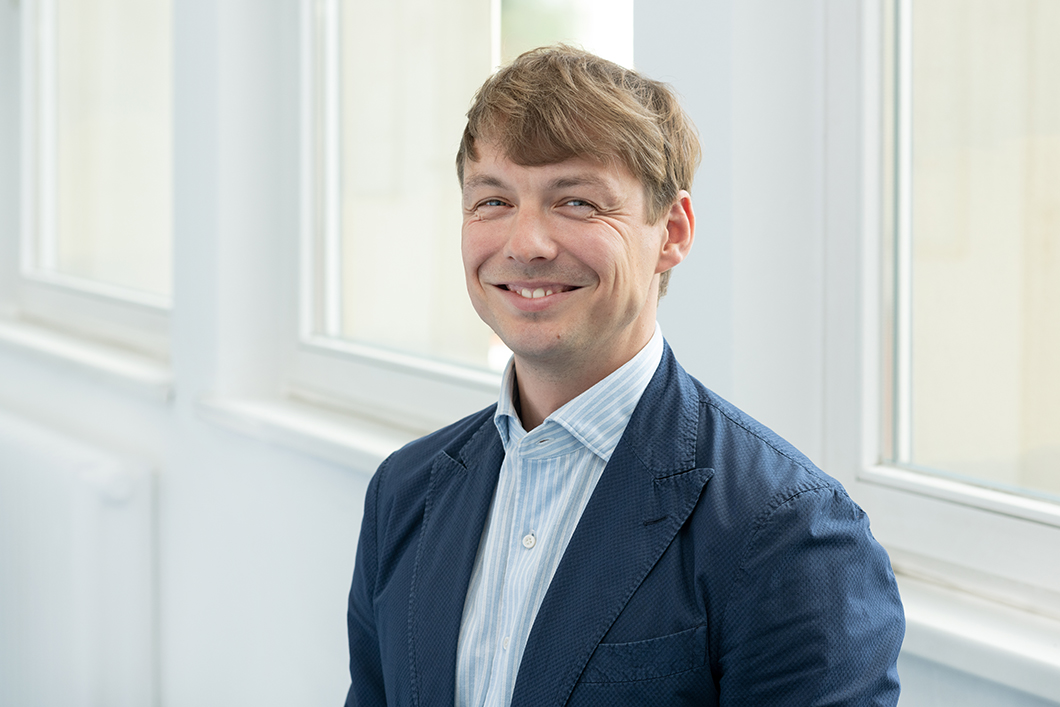
Dr.-Ing. Christoph Völker, Department Non-destructive Testing
Source: BAM
Interview series "Introducing People@BAM"
Dr.-Ing. Christoph Völker, Department Non-destructive Testing
Christoph, tell us a little bit about yourself. What did you do in "your life before BAM"?
When I was younger, all I ever wanted to do was to skateboard and to spend time with my friends. I was always fascinated by how things worked technically. Skateboarding had many degrees of freedom, so it was easy for me to spend endless cycles exploring the mechanics of skateboarding. Fortunately, I was able to find the same satisfaction in my engineering studies. I am a structural engineer by education, but I have never worked in this field. Today, I would say that I work at the interface between materials science and informatics.
What inspired you to pursue a career in science?
It was never my plan to “end up” in science. Equipped with a master’s degree I was looking for a job. When I came across a job offer from BAM in the newspaper for a project that involved programming in a German-Indian consortium I was excited since I did not dare to go abroad during my studies. It was just not in the budget. This job gave me the opportunity to make up for this and get paid. It was the best offer in the world.
Do you have any role models and, if so, which ones?
I grew up fascinated by the stories of my grandpa who visited India and China in the 70’s. He was also an engineer and my number one role model. It was a great honor for me to be able to follow in his footsteps.
What does your research focus on, and what excites you most about this topic?
In short: we are investigating how experimental materials science can be accelerated with a data driven approach. Our focus is on building materials. This is a necessity as we are still putting the life-friendly climatic conditions of our planet at risk by the high greenhouse gas emissions during cement / concrete production.
I'm fascinated by the idea that there is still so much to explore. For example, engineers optimize every aspect of their computer models except the material. The material remains a fixed parameter. Making changes here is so slow that it seems impossible for the engineer. This must change, because it is the materials that hold great potential for saving resources and carbon emissions. The relatively new developments in artificial intelligence and semantic databases seem to offer a realistic opportunity to catch up here for the first time. If we were able to use material properties as a degree of freedom, there would be exponentially more opportunities to improve the design. This could fundamentally change the way we engineer buildings. Following this path to see how far we can drive these developments really excites me.
Why research at BAM? What do you like most about your work here?
The great thing about BAM is clearly the great number of experts in one place. Of course, it would also be nice to have a professorship - however, many universities unfortunately lack the mid-level personnel. You would be more or less on your own. Here, you almost always work in large interdisciplinary teams. We are currently researching how the next generation of artificial intelligence could accelerate the development of green cements. The team consists of a mathematician working on philosophical concepts, a laboratory chemist, an expert in natural language processing, a software development student and me - a civil engineer. Where else would you find such a mixed bunch working on such a specialized topic?
How has COVID-19 affected your research?
Corona - as bad as it was for many - I felt was a digitization accelerator. That plays into our hands thematically. But organizationally, too, a lot has improved. I realize that I have never worked as efficiently as I do now in the digital age. Many things that were unthinkable before Corona are now so commonplace (e.g. home office and agile management). All in all, I would say that the impact on our work is clearly positive - also in terms of exchange with partners. We work very closely with other research institutions such as the TU Berlin or the Fraunhofer Materials Alliance and exchange information weekly via video conference. This has brought us very close to the rest of the world. I hope that as much of this as possible will be maintained in the post-Corona era.
What would you like to do when you're not doing research?
I have an (almost) 3-year-old daughter who keeps me quite busy. I love working on my old Alfa Romeo at the weekend. Spending time in the workshop and fixing things with your own hands is a nice contrast to the desk job. It is also a great opportunity to meet fellow enthusiasts.
If you should describe your job at BAM in one word – what would that be?
#ScienceRocks


